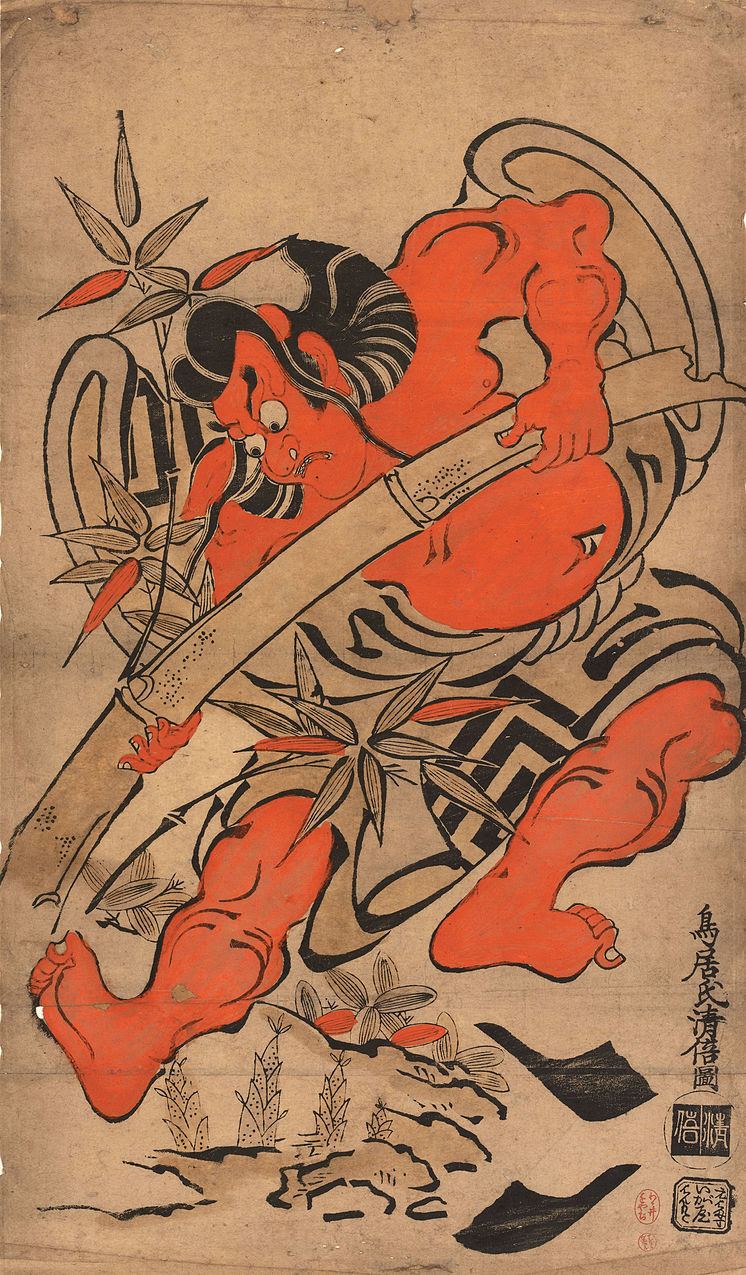Name Ichikawa I | ||
 | ||
Born 1660 Edo, Japan Died 19 February 1704(1704-02-19)
Edo, Japan Other names Ichikawa Ebizo I, Saigyu, Mimasu Hyogo, Naritaya | ||
Ichikawa Danjuro I (初代 市川 段十郎, Shodai Ichikawa Danjuro, 1660–1704) was an early kabuki actor in Japan. He remains today one of the most famous of all kabuki actors and is considered one of the most influential. His many influences include the pioneering of the aragoto style of acting which came to be largely associated with Edo kabuki and with Danjuro and his successors in the Ichikawa Danjuro line.
Contents
Like many actors, Danjuro also dabbled in playwriting, which he did under the haimyo (poetry name) Mimasuya Hyogo. "Mimasu" (三升) is the name for the mon of the Ichikawa family; many actors in the Danjuro line have since used "Mimasu" or "Sansho", an alternate reading of the same characters, as their haimyo.
Lineage
As the originator of the most celebrated and prestigious stage name in kabuki, there have been a great many descendants of Danjuro I in the kabuki world, some of them quite famous and accomplished themselves. Danjuro's father, Horikoshi Juzo, was not involved in the theatre, but was an otokodate, something of a street ruffian, but nevertheless a man very much a part of Edo popular urban culture; though not in the theatre himself, he may have been a patron of various types of performances, as well as of the closely related sex industry.
The sons of Danjuro I were known as Ichikawa Danjuro II and Ichikawa Sen'ya. The fourth Danjuro was his grandson; the fifth his great-grandson. His great-great-grandsons, as well as their sons and grandsons were kabuki actors of the Ichikawa family as well. Danjuro I also had a great many disciples.
A devout follower of Fudo Myoo, one of Japan's Thirteen Buddhas, Danjuro was the first to perform as Fudo onstage, and founded the actors' guild Naritaya, named after the Fudo temple Narita Fudoson.
Life and career
Born in Japan's capital of Edo in 1660, he first performed at the age of 13 at the Nakamura-za, under the name Ichikawa Ebizo. The first to take the name Ebizo, he was thus the founder or originator of this prestigious actor lineage as well. This 1673 performance of Shitenno Ochigodachi, in which Ebizo played Sakata Kintoki marks not only his first performance, but also the first use of red and black striped makeup, now called kumadori, and thus the nascent origins of the aragoto style.
Two years later, taking the name Danjuro, he performed in the first kabuki presentation based on the Tale of the Soga Brothers. The famous actor print seen here, though produced for a 1697 performance, depicts Danjuro in the same role, that of Soga Goro. Serving as playwright as well as actor, Danjuro produced a number of works, several of which were early forms of plays extremely popular later in the Edo period and still performed today, though they have undergone great changes over the centuries. Two of these such plays are Narukami, written and premiered in 1684, and Shibaraku, in 1697.
The Genroku period marked the peak of Edo period extravagance and hedonism. Danjuro was one of the most popular actors in Edo in this period, alongside Nakamura Shichisaburo I and Nakamura Denkuro I. The first aragoto performance in Kyoto was that of Genji Musha Homare no Seiriki in 1694; the following year, Danjuro would be featured in the Edo hyobanki, a popular publication ranking actors and performances, as jo-jo-kichi (上々吉, higher-higher-excellent) and his annual salary would reach 500 ryo.
Over the course of his career, Danjuro performed in, and wrote, a great number of plays. Unlike many later actors, he was not particularly faithful to any one theater, and moved back and forth between them many times. He also performed alongside his son, Ichikawa Kuzo, who would later take his father's name and become Ichikawa Danjuro II. Danjuro is said to have also been the first kabuki actor to write haiku and to take a poetry name (haimyo).
While performing at the Ichimura-za on 19 February 1704, Danjuro was stabbed and killed onstage by fellow actor Ikushima Hanroku.
